“Sometimes I think I’ve got something, only in the next minute to be thrown into confusion once again. I don’t like being confused; I have no tolerance for it. That’s why I wish either I didn’t have this ability to capture details, or I had the greater ability to assemble them into a picture that made some sense. It’s a bad job on God’s part to give a man with so little intelligence such a good eye for detail.” –Harry Hole, in Australia
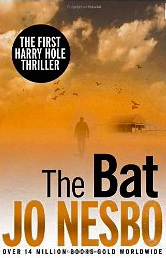 Norwegian author Jo Nesbo’s seven thrillers available in English are the third through ninth of the Harry Hole series, beginning with The Redbreast, published in the US in 2006, selected by Norwegian Book Clubs as the Best Mystery/Thriller of All Time, and continuing through Phantom, published in the US in October, 2012. The Bat, Nesbo’s first Harry Hole novel, has just been translated into English and has been available in the UK and Canada since October, 2012 (readily available through Amazon.ca and Amazon.co.uk). Originally published in Norway in 1997, it is intriguing for many reasons, not least for the growth it shows in Nesbo’s narrative and stylistic talents.
Norwegian author Jo Nesbo’s seven thrillers available in English are the third through ninth of the Harry Hole series, beginning with The Redbreast, published in the US in 2006, selected by Norwegian Book Clubs as the Best Mystery/Thriller of All Time, and continuing through Phantom, published in the US in October, 2012. The Bat, Nesbo’s first Harry Hole novel, has just been translated into English and has been available in the UK and Canada since October, 2012 (readily available through Amazon.ca and Amazon.co.uk). Originally published in Norway in 1997, it is intriguing for many reasons, not least for the growth it shows in Nesbo’s narrative and stylistic talents.
In this novel, Harry Hole, fifteen years younger than he is in Phantom, has been sent to Australia to spend a week with the Sydney Police, who are investigating the murder of Ingrid Holter, a young, blonde Norwegian woman with an Australian work permit. His hosts in Sydney have made it clear that the four detectives assigned to the case, not Harry, will be doing the investigation, important in the 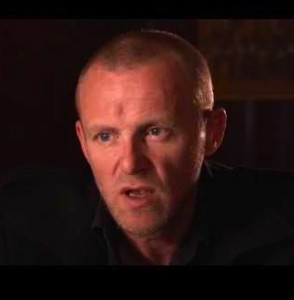 run-up to the 2000 Olympics. Harry’s first discovery is that no one can pronounce his name correctly, always calling him “Hole,” as in “mole.” Ironically he starts referring to himself as “Holy,” much closer to the correct pronunciation though not his character, and the “Holy” spelling continues through the narrative. His second discovery is that he will be working with a powerfully built former boxing champion, an Aborigine on the force whom Harry likes and finds intriguing, both personally and culturally.
run-up to the 2000 Olympics. Harry’s first discovery is that no one can pronounce his name correctly, always calling him “Hole,” as in “mole.” Ironically he starts referring to himself as “Holy,” much closer to the correct pronunciation though not his character, and the “Holy” spelling continues through the narrative. His second discovery is that he will be working with a powerfully built former boxing champion, an Aborigine on the force whom Harry likes and finds intriguing, both personally and culturally.
Ingrid Holter, the victim, had once hosted a children’s program but was working at a local bar when she was killed. An attractive blonde, she had been fending off advances from “Mr. Bean,” the strange bartender; avoiding her even stranger landlord and his vicious “Tasmanian Devil” of a dog; and spending her nights with a man known to have many connections to the drug world. As the police investigate, with Harry, of course, inserting himself into the action, it becomes clear that the police department may be looking for a serial killer, someone obsessed with blonde women. A check of murders over the past ten years shows four women who have been strangled with the killer’s bare hands, leaving no clues.
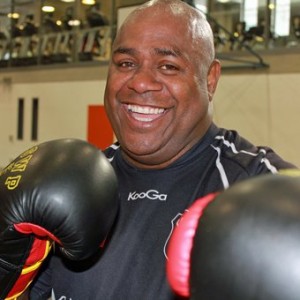 Nesbo’s well-known penchant for creating unusual characters from the dark side of town is clear even in this first novel. One character, an Aborigine clown, plays the role of Henry XVI in a circus act in which he is “beheaded.” Another, widely thought to be a gay man, is a “closet hetero.” Still others lead secret lives that even Harry does not suspect. Most interesting of the unusual characters is Harry himself, whose backstory is revealed here in some detail, going back to when he was barely out of his teens, and including some stories about his sister, about his yearning to be punished for a death he caused as a youth but which others covered up, and about his family. These homey details stand in stark contrast to the life of Andrew Kensington, the Aborigine officer with whom he is working. Andrew, a former hippie and boxer so good he had to quit for fear of killing someone with his
Nesbo’s well-known penchant for creating unusual characters from the dark side of town is clear even in this first novel. One character, an Aborigine clown, plays the role of Henry XVI in a circus act in which he is “beheaded.” Another, widely thought to be a gay man, is a “closet hetero.” Still others lead secret lives that even Harry does not suspect. Most interesting of the unusual characters is Harry himself, whose backstory is revealed here in some detail, going back to when he was barely out of his teens, and including some stories about his sister, about his yearning to be punished for a death he caused as a youth but which others covered up, and about his family. These homey details stand in stark contrast to the life of Andrew Kensington, the Aborigine officer with whom he is working. Andrew, a former hippie and boxer so good he had to quit for fear of killing someone with his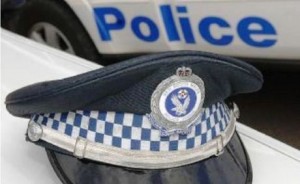 fists, has never known his parents. Part of the Stolen Generation of Aborigine youth who were removed from their parents and educated by outsiders, Andrew has been doubly hurt, denied a family and denied a culture. Nesbo shares much information about Aborigine culture, their myths and legends, beliefs, and value system here, and while it is clear that the author himself is fascinated with this culture and its contrasts with what he sees of the seamier sides of Sydney life, these digressions, unfortunately, do not advance the action and seem like add-ons to his story.
fists, has never known his parents. Part of the Stolen Generation of Aborigine youth who were removed from their parents and educated by outsiders, Andrew has been doubly hurt, denied a family and denied a culture. Nesbo shares much information about Aborigine culture, their myths and legends, beliefs, and value system here, and while it is clear that the author himself is fascinated with this culture and its contrasts with what he sees of the seamier sides of Sydney life, these digressions, unfortunately, do not advance the action and seem like add-ons to his story.
As in the other Nesbo novels, Harry also falls in love, he gets physically attacked, sometimes viciously, and fights a losing battle with the bottle, once again.
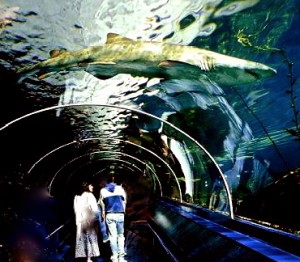 The novel occasionally has the feeling of a travelogue, with each trip to a new part of Sydney or outside it described in vivid detail – his trip to a remote area in New South Wales, to the Sydney Aquarium, to a clown circus, and to several well described parks, in one of which another body is discovered. Nesbo does provide enough blood and thunder to keep readers reading, however, even when they may wonder where the plot is going. The dialogue is sometimes unrealistic, with one character often expounding for a long paragraph before he is interrupted by another character, who answers in another long paragraph, rather than conveying information through the give and take of normal conversation, as Nesbo does in later novels.
The novel occasionally has the feeling of a travelogue, with each trip to a new part of Sydney or outside it described in vivid detail – his trip to a remote area in New South Wales, to the Sydney Aquarium, to a clown circus, and to several well described parks, in one of which another body is discovered. Nesbo does provide enough blood and thunder to keep readers reading, however, even when they may wonder where the plot is going. The dialogue is sometimes unrealistic, with one character often expounding for a long paragraph before he is interrupted by another character, who answers in another long paragraph, rather than conveying information through the give and take of normal conversation, as Nesbo does in later novels.
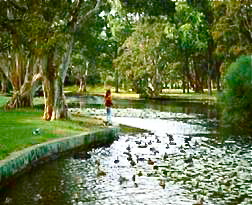
One reference gave me long pause in the course of the novel. After Harry has discussed an accident in which he, as a youth, was responsible for a death, and for which he has never been punished, he refers to Charles Van Doren, a (real) American professor and scion of a famous intellectual family, who in 1957 won the equivalent of over a million dollars on the American TV quiz show “Twenty-One.” Van Doren confessed, in 1959, to a US House Subcommittee on Congressional Oversight, that the producers of the show had given him the questions in advance. Though I could identify with Harry’s statement that “I think people feel a kind of need for punishment when they can no longer accept their own actions,” I could not understand what would have made Nesbo include this particular reference as a parallel for Harry’s sense of guilt in this 1997 novel, almost forty years later. I later discovered that the film “Quiz Show,” released in 1994, not the original events, must have been the inspiration for this odd choice of image.
For those who have enjoyed other, later Nesbo novels, this one is worth reading, but if you have not yet discovered Jo Nesbo, my suggestion is that you start with The Redbreast, probably Nesbo’s most interesting and challenging thriller and go forward from there. It is set in Norway, the country Nesbo knows best.
Also by Nesbo: THE DEVIL’S STAR (2005), HEADHUNTERS (2008, not part of Harry Hole series), THE LEOPARD (2011), NEMESIS (2008), PHANTOM (2012), THE REDBREAST (2006), THE REDEEMER (2009), THE SNOWMAN (2010), POLICE, THE BAT, COCKROACHES (1998), THE SON (2014), BLOOD ON SNOW (2015), MIDNIGHT SUN (2016), THE THIRST (2017), KNIFE (2019)
Photos, in order: The author’s photo is from http://article.wn.com
Boxing is a big sport among Aborigine youth. The photo here is from http://www.abc.net.au
The police are now actively recruiting aborigine men to act on behalf of the Australian Police. This photo and the story related to it is found on http://www.northernstar.com.au
Harry and his girlfriend visit the Sydney Aquarium in the middle of one night. The Great White is one of the most famous exhibits in the underwater tunnel: http://www.cityknown.com
Centennial Park in Sydney is seen here: http://www.last.fm
